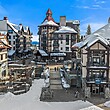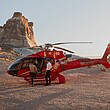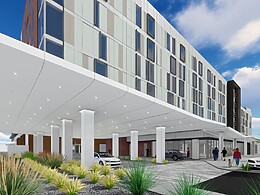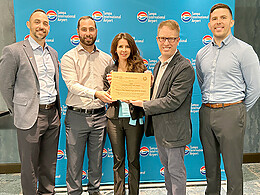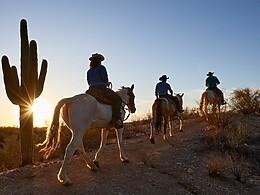
Photo: Boeing
NASA and Boeing have joined forces to develop a demonstrator of an all-new narrow-body aircraft. The state-of-the-art aircraft design reduces fuel consumption, emission, noise pollution and could make the next single-aisle commercial aircraft 30% more efficient.
The truss-braced-wing demonstrator concept combines the efficiency of a wing with the structural benefits of a truss. In theory, the longer narrower wing with a truss that runs along the top will provide additional support and reduce the weight of the wing.
The agency is providing $425 million to fund the project’s estimated $1.15 billion cost, with Boeing and its commercial partners contributing the balance of an expected $725 million, according to NASA.
NASA has previously revealed its intentions on developing a narrowbody demonstrator but had not yet disclosed its project partner or the aircraft’s design. Agency officials say their work could advance and prove out technologies that might be incorporated into a new single-aisle aircraft entering service in the 2030s. The manufacturer has not yet disclosed other project partners.
“NASA has selected Boeing as our partner in designing, building and flying a brand-new large-scale experimental airplane called the Sustainable Flight Demonstrator,” says NASA Administrator Bill Nelson in a statement. “Boeing’s concept is a transonic truss-braced wing single-aisle aircraft, which is scheduled to fly in 2028.”
This partnership will leverage NASA’s expertise in aeronautics research and testing to help Boeing to develop and test the demonstrator. NASA expects the flight test program to last one year, with testing taking place from its Armstrong Flight Research Center in California.
Boeing Chief Technology Officer Todd Citron says the partnership will help equip “future airplanes with breakthrough technologies.” The truss-brace design’s high-mounted wings “free up underwing space for advanced propulsion systems,” he adds. Boeing will develop the demonstrator using an airframe from an existing single-aisle aircraft, officials say.
Boeing has released an image, pictured above, showing two truss-braced concepts, one labeled VS-1 and the other VS-2. The aircraft shown have long wings mounted atop their fuselages, supported by trusses and carrying apparent large-diameter turbofans.
“It’s our plan to demonstrate this extra long, thin wing—stabilized by the braces—that will make commercial airliners much more fuel efficient by [reducing] drag,” says Nelson. “Boeing’s proposed design could make a significant contribution toward our goal of improving fuel efficiency by as much as 30%.”
In addition to improving field efficiency, the new concept has the potential to reduce noise pollution, a major concern for communities near airports. The truss structure helps to reduce the size of the wing, which in turn reduces the amount of noise generated during takeoff and landing.
With any new design, the benefits come with complications. The improved aerodynamic efficiency adds a complex design to aircraft seen today. They have joints and different loading paths that engineers must accommodate as well as buffet icing and powerplant integration challenges. The design’s longer wings will create space challenges at airports.
Aerospace analyst Michel Merluzeau with consultancy AIR cautions that NASA’s effort “does not mean in any way” that Boeing’s next narrow-body jet will have a truss-braced wing. “It’s an avenue that is being explored,” he says.
This collaboration between NASA and Boeing can accelerate the development of new technologies and concepts that will shape the future of aviation. The truss-braced-wing demonstrator is one of the many innovative solutions that are being developed to create a more sustainable and efficient aviation industry.
Stay up to date at www.nasa.gov.


